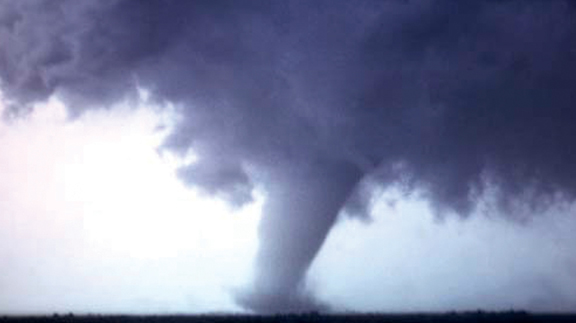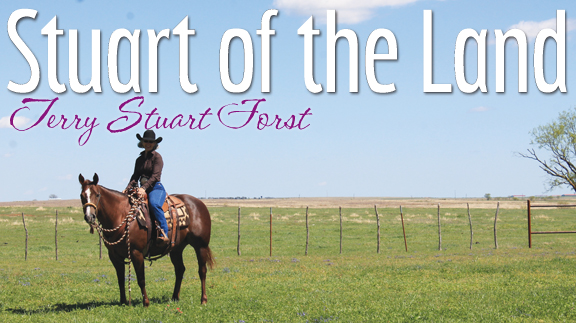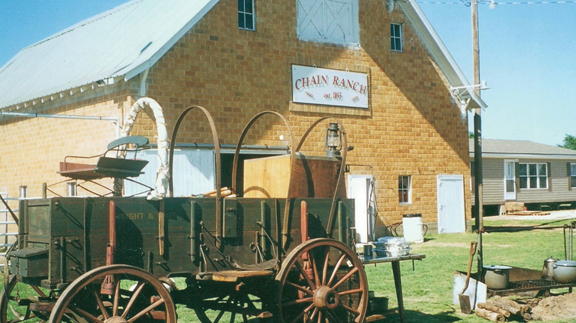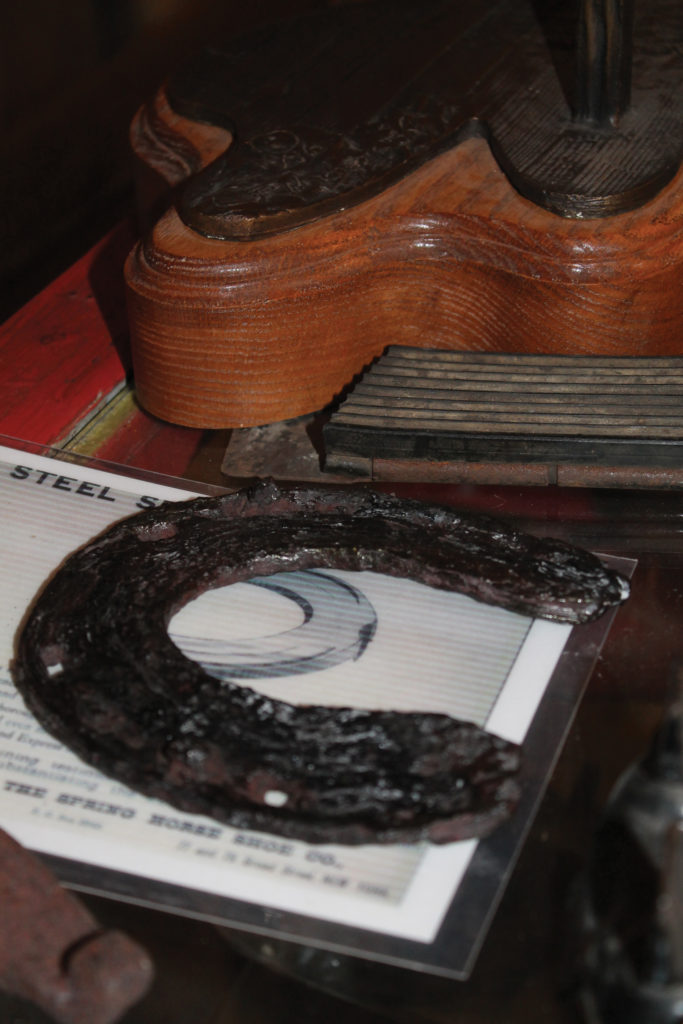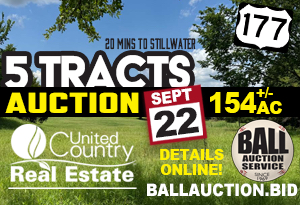Equine
5 Common Winter Horse Care Mistakes
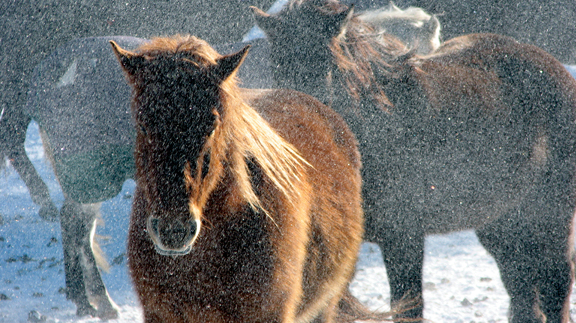
By Laci Jones
With the winter season in full swing, it is especially important to make certain your livestock are well taken care of.
“Winter is the time where we see the most colic in horses, many horse care issues and a lot of respiratory and skin issues,” said Shem Oliver, DVM, board certified surgeon and partner at Performance Equine Associates in Thackerville, Okla.
Ensure your horse is taken care of all season long by avoiding these five common winter horse care mistakes.
Over Blanketing
It may be difficult not to feel guilty about leaving a horse out in the cold. Horse owners may be tempted to rush to their horse’s aid and pile blankets on them, but Oliver said that may not be the best idea.
“I see both sides of the spectrum—over blanketing and under blanketing,” he said. “Usually under blanketing is less of a problem.”
Oliver said he rarely sees an under-blanketed horse because horses with short hair coats year-round are often blanketed appropriately. Oliver said owners that have horses living outside are more likely to over-blanket.
“Those horses adapt by growing a longer hair coat,” Oliver explained. “An owner puts the heavy winter blanket on them when it gets cold, but doesn’t take it off of them at the appropriate time.”
Over blanketing can cause overheating, which may lead to dehydration as well as other health problems. Oliver said over blanketing can also cause a horse to sweat, which may allow fungus to grow and lead to skin conditions like dermatitis. Sweating can also make the horse colder.
“The main thing with blankets is you have to adjust it based on how your horse responds to blanketing,” Oliver said. “If you put the blanket on when it is too warm and they start to sweat, the next time you don’t need to blanket until it is a little cooler.”
Light blankets should be placed on horses with little to no hair at around 65 degrees Fahrenheit, he said. When the temperature drops to 50 degrees Fahrenheit, a heavier blanket is required. Long-haired horses may need a blanket at colder temperatures.
Oliver said more management is required than just putting a blanket on and turning them out to the pasture.
“I see people who leave a blanket on for a week,” he said. “They pull it off and see the horses have a cut or rub sore that the blankets cover up.”
He said rub sores can be caused by an ill-fitted blanket.
“Checking horses appropriately every day, taking the blanket off, making sure it’s clean and the horse is clean underneath is key if you are going to blanket a horse,” he added.
Lack of Shelter
A common mistake made by horse owners is horses not having enough shelter from the elements.
“I don’t think you can have too much shelter,” Oliver said. “The only way you can have too much shelter is if they are not used to being confined to a stall. You can have issues with colic.”
If an owner has horses housed in a barn, the barn should have proper ventilation. Proper ventilation eliminates excess moisture and condensation buildup, which impacts a horse’s respiratory health.
“At minimum, horses need to have a three-sided shelter in their pasture where they can get out of the wind and elements,” Oliver said.
Horses will more readily go into a shelter if there is a large opening, Oliver said. A three-sided shelter also allows horses to take shelter during weather storms and return when it passes. The opening of the three-sided shelter should face away from the elements.
“The south side is usually open because the wind usually comes from the west or north as well as rain or snow,” Oliver said.
How large a shelter is needed depends on the number of horses in the pasture, Oliver said.
“If you have 20 horses in a pasture and only one three-sided shelter, then they are not going to cram themselves in there,” Oliver said. “Horses, while they will get along, are not going to pack themselves in a shelter.”
No Beauty Maintenance
Due to winter weather conditions, a horse owner may not see his horse every day. An owner may not catch a problem that may occur when they are not riding or grooming as often.
“You see things like their hoof care becoming neglected,” Oliver said. “They get foot abscesses, thrush and/or they get long feet.”
Horses travel on uneven, frozen ground that could possibly crack and break hooves. Regular hoof trimming or shoeing is important even in the winter, he explained.
“The main thing is treating horses like you would as if you were riding them every day including grooming their hair coat and giving them a bath even though it is cold,” Oliver said.
A horse owner needs to make certain the horse is dry before going back outside. The drying process takes longer in the winter, he added.
By not grooming or riding, an owner may not notice a horse’s illnesses, injuries or weight loss. Grooming daily allows owners to check for parasites, wounds, or weight loss.
“Maintain a regular schedule of grooming care and hoof care,” Oliver said. “A lot of times when people aren’t riding like they would in the summer, it slips their mind. It is easy to happen to anybody.”
Not Increasing Rations
“A lot of times, people feed horses less in the winter,” Oliver said. “Because they are riding less, the owners think the horses need less feed, but they actually need more feed in the winter.”
While horses do not expend as much energy riding, they will burn more calories to stay warm in the cooler weather. He said underfeeding is why horses “go downhill” in the winter and can cause weight loss.
The horses might not need as much grain, Oliver said. However, the horses need more forage in the form of hay or increased fiber in their diet. Forage provides an excellent source of calories and the large amounts of fiber helps keep horses warmer in the winter, he added.
“A good rule of thumb that I learned in vet school is they need about one percent more forage for every degree below freezing it gets,” Oliver said. “For example, if it’s in the 20s, they need 10 percent more feed. If they are getting 20 pounds of feed, then you will need to add two pounds more to their feed to maintain.”
Vitamins and minerals are always required, especially in the winter, he said. Adequate levels of vitamins are available in good quality horse feed and hay, but a vitamin and mineral supplement can help.
“Keeping electrolytes, salt blocks and minerals out for horses will help keep a balanced diet, but it will also stimulate them to drink more water,” Oliver said.
Dehydration
Oliver said horse dehydration may be the number one mistake amongst horse owners. Water begins to freeze as temperatures begin to drop, and snow and ice cannot be substituted for drinking water.
“Usually if a horse runs into a problem in the winter, it is because their water if frozen over and they get dehydrated or the horse doesn’t drink as much because the water is cold,” Oliver said.
A horse will drink water above 50 degrees Fahrenheit, Oliver explained. Fresh, warm water is necessary for horse hydration, he added.
If a horse is not properly hydrated, they will consume less ration regardless of the quality of feed. Grain and hay fed mostly in the winter months contains less than 15 percent moisture, where pasture grasses contain approximately 80 percent moisture.
Dehydration in horses can lead to weight loss, lack of energy and impaction colic, Oliver said.
Investing in a heating device specifically designed for waterers and troughs can help keep horses hydrated all winter long.
He said horses are more neglected in the winter. An owner should check their horse each day for injuries and to make sure they are drinking enough, he added.
In addition to these five common mistakes, Oliver said owners should make sure to exercise their horses year round.
“The main thing is nothing should change as far as the time of year,” Oliver said. “Not changing their schedule from summer to winter is key.”
Equine
Trailer Safety Checklist
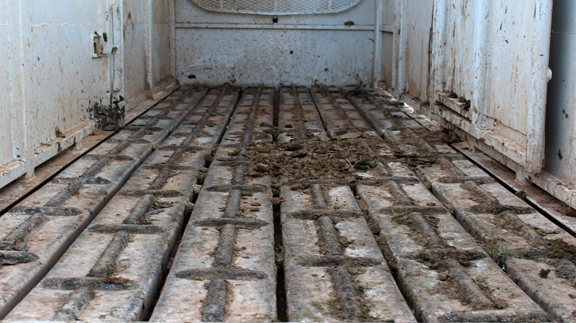
By Janis Blackwell
As the season arrives to gear up for participation in your equine event of choice, one thing remains a constant for all horse owners. That constant is our responsibility to insure the safety of our horses by being diligent to maintain the integrity of the trailers in which we haul them. There are a number of things that can be dangerous both inside and outside of your trailer. Whether you traveled all winter long or whether your trailer sat unused or was used very little through the cold weather months, at least once a year your trailer is due a thorough going over. So here we go with a checklist that will help you insure a happy and safe trip for you and your equine partner.
- A sound floor is absolutely imperative. Whether your floor is aluminum, steel or wood, it should be cleaned regularly after use to preserve it. Urine and manure will erode and weaken all types of floors. Even rubber mats will not prevent erosion of your floor. (Maintenance tip: remove mats and wash aluminum floors often to prevent erosion.)
- Especially check wooden floors for rotten boards. Immediately replace questionable flooring before hauling. (Maintenance tip: For wood, remove mats and wash out manure and debris. Coat wooden floor in a cheap motor oil. Allow to sit in hot summer weather until the oil soaks in. Be careful—floor will be slippery until oil cures into the wood. This treatment yearly will preserve a wooden floor for much longer than normal as it repels urine and protects the wood).
- Keep the interior and exterior washed to enable you to check for rusted out places, leaks, etc.
- Have a professional check your brakes at least once yearly to be sure they are operating properly.
- Be sure tires are inflated to the proper air pressure, and check the inside of each tire for hidden unusual wear that could cause a blowout. Replace worn tires before leaving home.
- Wheel bearings must be checked and packed at least once a year. This should be done even if the trailer has been rarely used since the last time the wheel bearings were packed. In fact, trailer maintenance professionals say that sitting stationary and unused is even worse for the bearings. Improper care and maintenance of wheel bearings can cause a wheel to seize up and actually twist off while in use. Use a horse trailer professional for this maintenance task.
- Axles should be checked for bowing. A bent or bowed axle can cause excessive tire wear and damage wheel bearings.
- There should be no more than two inches in height difference from the front of the trailer to the back. More difference than that causes the bulk of weight of the trailer and its contents to ride mostly on the rear axle causing it to bow and wear on both tires and wheel bearings.
- Another critical part of the trailer to keep an eye on are the butt chain or bar and the back door. The butt chain or bar should be firmly attached to the wall and its keeper and should always be latched. The door should have a strong secure latch with a pin to insure it stays latched while in motion.
- Finally, but certainly not of least importance is a thorough check of the trailer hitch including ball and coupling. Keep the ball well greased. Periodically, check to see that the ball is still securely tightened and the latch on the coupling is working properly.
These few critical safety check points can save you money, stress and the wellbeing of your horse. Until next time, happy trails and safe traveling.
This article was originally published in the April 2016 issue of Oklahoma Farm & Ranch.
Equine
History of the Horseshoe Part 2
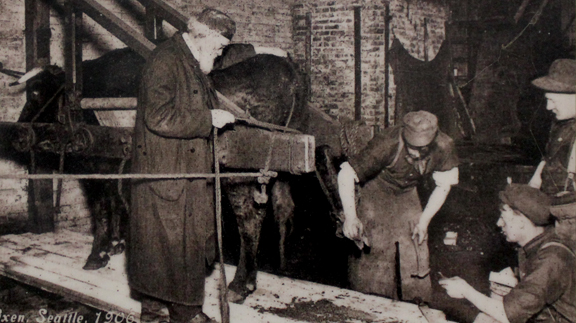
By Laci Jones
With the saying, “Don’t reinvent the wheel,” Lee Liles, owner of the National Museum of Horse Shoeing Tools and Hall of Honor said the same could be said about the horseshoe.
“Nothing is really new in a horseshoe,” he explained. “It just seems to be a revolving circle.”
While the horseshoe has not changed, Liles said the title of the horseshoe specialist has. At some point over time, the horseshoer took on the name “farrier,” he added.
Certification
Horseshoers in the late 19th century needed to have a certificate issued by the Master Horseshoers National Protective Association. Liles said the association was like a union. If someone was caught without being a licensed member, they could be fined $400.
The color of the certificates was different each year, making the certificates easy to identify when entering the blacksmith’s shop.
Other countries like Canada and Germany also required certification. Horseshoers in London in 1909 needed to carry a certificate with them at all times. The certificate was signed by the queen, Liles explained.
Mid-Century Trends
In the 1940s, 1950s and 1960s, all horses had heel caulks on their horseshoes.
“I can remember back in the 1960s we had a shoe we called ‘The Cowboy Shoe,’” he added. The Cowboy Shoe was beveled out on the inside to help shed dirt. Liles said a good cow pony on rough terrain requires a tougher shoe.
“If it weren’t for a horseshoer moving up [in rough country] there would never have been good cattle country,” he said. “He kept the horses sound from being on the rocks.”
He remembered when owners could get away with just trimming their ranch horses in the 1960s. “Getting into the 1970s, you had to put shoes on ranch horses,” Liles added. “Their feet weren’t as strong because the breeding changed their feet a lot.”
The Horse
“The life of a horseshoer is very short,” Liles explained, “especially this day and time more so than the old days.”
To give a time-life-history of the horse, 24 million horses were in the United States in 1915. By 1950, they were down to two million. Farmers began working with tractors and the workhorse phased out, he added. In the late 1950s and early 1960s, horses became luxury items, Liles explained. Owners used horses more on ranches and started horse shows and events.
“In 1965, there was a shortage of horseshoers because most were cavalry horseshoers or taught by somebody who was in the cavalry,” he added. Those horseshoers retired by the 1960s, and there was a need for horseshoeing schools.
Z-Bar Shoe
“Our shoe industry has changed dramatically since 1979,” Liles explained. “We’ve got so may good horseshoes on the market today that you hardly need a forge to heat them up to shape them.”
Liles said the industry now has front and rears in the patterns, which has changed horseshoeing. The Z-Bar shoe may have been patented in 1900 in New Orleans, but the shoe has become more popular in recent years. “It’s popular in our horseshoeing contests,” Liles explained.
The Z-Bar shoe is used on horses that have a bad quarter crack, he added. The shoe relieves the pressure and lets the swelling go down, and the bar distributes the weight in the foot. This is the only patent I ever seen south of the Mason-Dixon Line,” he added.
Current Trends
“Just in the last few years, we’re seeing horseshoes with multiple nail holes,” Liles added. “That is more than we’ve ever had.”
For 200 years in the United States, horseshoes have always had eight nail holes in the shoe. Now, 10 to 16 nail holes are in a shoe. “That’s a dramatic change,” Liles explained. “It gives [farriers] more of an option to where they can rotate the nails around if the foot gets bad, so it’s not a bad deal.”
Shoeing horses on the front end and not the back end is trending in the show horse industry, he explained. When asked why this is trending, Liles said one person started winning, and everybody started thinking it would help them win.
“It’s not always necessary to shoe the back end of a horse,” he said. “Most of the weight on a horse is carried from the front end with the weight of the horse’s neck and the cowboy.”
Marvin Beeman, DVM and educator for the American Colt Horse Association, told Liles how a horse farrier shoes a ranch horse depends on the biographical areas in which they live in.
“If you change your horse from one environment to another environment, it will actually change the growth pattern of the horse’s foot and start a groove around his foot,” Liles explained. “When you change that horse’s environment, the horseshoer can actually read it in his foot.
“That’s hard for a lot of people to imagine, but when you bring a horse from the east coast to the west coast, that’s a dramatic change for that horse.”
Different Materials
Liles said using different materials is a current trend among horse farriers. In the early days of horseshoeing, farriers used wrought iron. Today, most horseshoes are made using plain steel. However, the show horse industry uses a lot of aluminum and titanium.
“A pair of heavy walking horse shoes can cost $5,000,” Liles explained, “but it’s made out of tungsten.”
Plastic and rubber shoes have also become popular in recent years. Amish horses used on roads have horseshoes made of Borium. Borium is a texture that keeps the shoe from wearing out, but it can also have a negative impact on the road.
“If you drive around in Amish or Mennonite country and see a dip in the road, it’s from a horse going down the road,” Liles explained. “A lot of states like Pennsylvania and Ohio have funded projects trying to come up with a traction device horseshoe that will not hurt their asphalt and highways as bad.”
Glue-on shoes have come along after he was an active horse farrier. The dairy industry uses the glue-on shoes more than anybody, he added. Cattle are on water and concrete, and they can have a tremendous problem with foot rot. Liles said proper nutrition can help combat this disease.
“I’ve never seen many horse’s feet that I couldn’t nail a shoe on,” Liles said, “but, I see where they help a lot of horses today.”
To learn more about the history of the horseshoe, visit www.horseshoeingmuseum.com.
This article was originally posted in the August 2016 issue of Oklahoma Farm & Ranch.
Equine
History of the Horseshoe Part 1
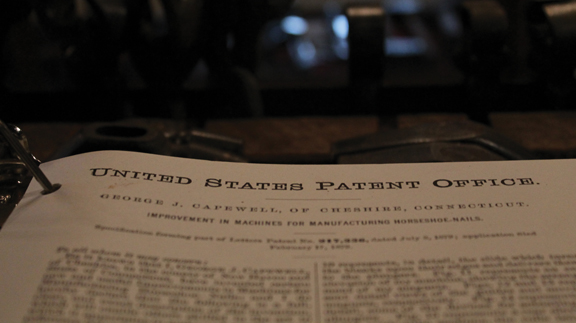
If it were not for the horseshoe and wagon wheel, the United States would not have been founded, according to Lee Liles. The owner of the National Museum of Horse Shoeing Tools and Hall of Honor said Oklahoma is the grandest example in the world.
Horseshoe books date back to 400 B.C. In fact, the oldest horseshoe at the museum in Sulphur, Okla., is more than 500 years old from Denmark.
“I don’t like going back much farther than 1860 because we don’t have the documentation to back it up,” Liles explained. “You got a few magazines like the Harper Weekly and the Wallaces’ Report, but you want to verify the facts.”
19th Century Patents
The first patent on a horseshoe manufacturing machine in the United States was issued in 1834 to Henry Burden, a Scottish-born industrial engineer. By 1850, Burden had more than 50 different patents on his machines at Burden Iron Works in Troy, N.Y., Liles added.
This was all before the first horseshoe nail patent, which was issued in 1863 to Daniel Dodge in Keeseville, N.Y. The horseshoe nail is the most difficult nail in history to manufacture, Liles explained.
“It’s got a lot of different tapers to it,” he explained. “The nail needs to be strong and durable enough to drive through a foot, come out, be turned over 180 degrees and clenched down in the horse’s foot.”
The nail industry has changed a lot throughout the years, Liles said. In 1853, the horseshoe nail was made from Swedish Iron, but copper nails have become popular in recent years. The oldest nail company left in the United States was the Capewell Horse Nail Company owned by the Mustad family. The nail company started in 1881, and they recently moved out of the country.
“All of these major shoe companies, tool companies and nail companies were located in the northeast United States,” he explained. “That’s where the population was. There weren’t any companies located down here in the South like Oklahoma or Texas.”
Horseshoeing Literature
Most information on horseshoeing actually came from Germany, Liles explained. German books were first written in 1861 by Leisring and Hardman. In 1882, Lungwitz was added as a co-writer.
“[Leisring, Hardman and Lungwitz] were the main vets at the Royal Veterinary College,” Liles said. “[Hardman] wrote his own first book in 1884 and wrote 24 editions. Nobody else has ever written that many books.”
Liles said books are the greatest assets for education. In 1866, the U.S. Congress adapted the cavalry books would be written on the Dunbar System.
“Alexander Dunbar was a person who our Federal Government paid to teach anatomy to horseshoers back in that era,” Liles explained.
John Kerman, who was running a horse shoeing school at Fort Carlisle, Penn., wrote the book written on the Dunbar System. The first American horseshoe book was written in 1871. In 1902, Kerman came to the shoeing school at Fort Riley, Kan.
“The cavalry has been the main source of horseshoers in this country up to the 1950s,” Liles said. “The Army technical manual, TM-220, has been the most copied horseshoeing book in history.”
In the 1890s, Pennsylvania State recruited Mississippi-native, John Adams as a professor. The university sent Adams to Germany to study under Lungwitz.
“When he came back in about 1896, he and Lungwitz were such good friends that he had permission to write the American edition of the Lungwitz book,” Liles explained. “When he came back, Adams brought an instructor from Germany to Penn State to teach anatomy and horseshoeing to the vet students.”
Even Cornell University and Michigan State University had a protégé of Lungwitz in 1913, Liles said.
William Russell
“We had a great educator in Cincinnati, Ohio, who wrote 15 horseshoeing books from 1879 to 1907,” Liles explained. “His name was William Russell.”
In 1887, the first shoemaking contest was held in Cincinnati, Ohio, where Russell won. “The contest consisted of making 100 shoes on an opry stage in front of 3,000 spectators,” Liles explained.
Russell made 100 horseshoes in two hours and 40 minutes with the help of a team. John Silk, who later became a famous horseshoer, was one of Russell’s competitors.
In the 1890s, many horseshoers, including Russell, created display cases filled with their horseshoes. Many of these display cases are still intact and hanging in the museum. One of the cases was in the World Fair in St. Louis in 1904.
“When it went to the World Fair, they added nails to the case,” he added. A photo of the case at the World Fair was added into one of Russell’s books, and it was one of the last display cases he made. Russell offered all of his collection for sale in the same year.
“He died in 1907,” Liles explained. “He was a sick man, and he was blind when he died.”
Aluminum Horseshoe
Liles also has a case located at the museum built in 1895 had an aluminum horseshoe inside. “That is very rare,” he said. “In that era, they only produced 65 pounds of aluminum per year. Aluminum was a precious metal, and you had to buy it through a jeweler.”
Liles said he does not think the aluminum held up well to wear and tear. William Wedekind received the title, “The World’s Greatest Horseshoer” at the 1892 Chicago World’s Fair. Wedekind even made an aluminum horseshoe in 1883.
“It was so light that it floated on water,” Liles explained. “They can’t duplicate the shoe today to make it float on the water.”
The Right Shoe
Liles said when people come to museum, they are used to dealing with one breed of horse and one discipline with the horse. The type of horseshoe used depends on the breed and the discipline. “In this country, we have roughly 400 different breeds of horses,” Liles said.
Liles said he was a horseshoer, which is a lot different from a cowboy shoer. For instance, a horse that is going to go trail riding or ranching needs a high-quality steel horseshoe.
A show horse will wear aluminum shoes because the aluminum will wear the toe quicker. “It will give him a quicker time to break that shoe in,” he added. “If your shoe isn’t new at the show, he has to get that shoe back to where it feels comfortable.”
Many of the plastic shoes are meant for horses that are on concrete, asphalt or wood. Liles said plastic shoes are commonly used in the circus.
A common misconception is people think the weight of the horseshoe affects a horse in either racing or working. “They think plastic is so much lighter,” he explained. “If that is the case, why don’t you just ride him barefoot?”
To learn more about the history of the horseshoe, visit www.horseshoeingmuseum.com.
This article was originally posted in the July 2016 issue of Oklahoma Farm & Ranch.
-

 Attractions7 years ago
Attractions7 years ago48 Hours in Atoka Remembered
-

 Country Lifestyle1 day ago
Country Lifestyle1 day agoJuly 2017 Profile: J.W. Hart
-

 Country Lifestyle3 years ago
Country Lifestyle3 years agoThe Two Sides of Colten Jesse
-

 Outdoors7 years ago
Outdoors7 years agoGrazing Oklahoma: Honey Locust
-

 Outdoors4 years ago
Outdoors4 years agoPecan Production Information: Online Resources for Growers
-

 Equine7 years ago
Equine7 years agoUmbilical Hernia
-

 Farm & Ranch6 years ago
Farm & Ranch6 years agoHackberry (Celtis spp.)
-

 Outdoors3 years ago
Outdoors3 years agoSuzy Landess: Conservation carries history into the future

